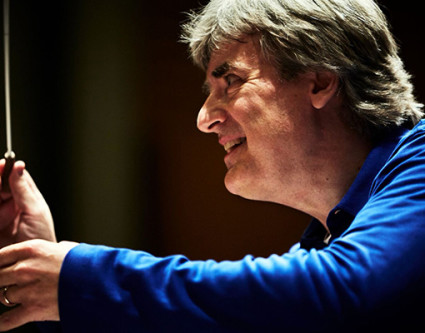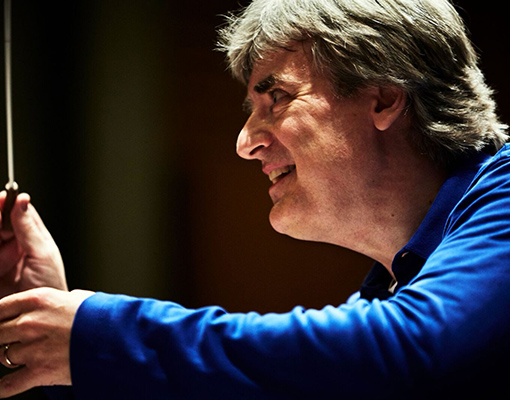 United States Sibelius, Kullervo: Maria Männistö (soprano), Ilkka Kallio (Runo singer), Timo Alakotila (harmonium), Vilma Timonen (Kantele), Benjamin Appl (baritone), Cappella Romana, Seattle Symphony Chorale, Seattle Symphony Orchestra / Thomas Dausgaard (conductor), Benaroya Hall, Seattle, 2.6.2018 (ZC)
United States Sibelius, Kullervo: Maria Männistö (soprano), Ilkka Kallio (Runo singer), Timo Alakotila (harmonium), Vilma Timonen (Kantele), Benjamin Appl (baritone), Cappella Romana, Seattle Symphony Chorale, Seattle Symphony Orchestra / Thomas Dausgaard (conductor), Benaroya Hall, Seattle, 2.6.2018 (ZC)

Sibelius – Kullervo Op.7
In the waning weeks of the Seattle Symphony’s 2017/2018 season, the orchestra is presenting a series of concerts centered around blockbuster works that are less often performed and likely unfamiliar to parts of the audience. These coming weeks are a chance to make new friends in the symphonic repertoire. This was certainly the case with Saturday’s performance of Jean Sibelius’s earliest symphonic work, Kullervo, led by principal guest conductor and incoming music director Thomas Dausgaard.
Kullervo is the product of Sibelius’s interest in the cultural myths and legendary heroes of his native Finland. For inspiration, he drew on The Kalevala, a collection of epic stories from Finnish history. With nationalism on the rise in the 19th century, The Kalevala assumed even greater importance for Finns wanting independence from Russia. Kullervo is the first of the composer’s nationalist works which draw from stories in the collection.
Set in five, episodic movements, the piece follows the tragic story of Kullervo, son of King Kaleva. Each movement of the symphony describes a different moment of Kullervo’s life. The first works as an instrumental prelude establishing the heroic dimensions of the story, told through bold gestures and dramatic sweeps. The second movement describes the protagonist as a youth.
In the third, a men’s chorus, along with a baritone and soprano soloist, recreate a scene pivotal to the symphony’s remaining movements. Kullervo meets a beautiful woman and after a prolonged effort successfully seduces her. Not long after, Kullervo and the maiden discover they are brother and sister, and upon learning this news the maiden leaps to her death. Kullervo fights his uncle in the fourth movement, in an animated scene with more bounce than one might expect from battle music. In the finale, the chorus returns and the work closes plaintively as Kullervo returns to the spot where he met his sister, is overcome with grief, and falls on his own sword.
Nuance isn’t a prominent quality of the symphony. Sibelius gravitates to bombast and excess in the three strictly instrumental movements, and pounds away at ideas in time and again. This reiteration, coupled with Sibelius’s daunting orchestration, stretches the best orchestras. For me, performances of Kullervo work best when it is played at full tilt with conductor, orchestra, chorus and soloists pushing for maximum impact. This was the case for most of the ensemble’s performance.
Dausgaard and the orchestra tended to under-play during the swirling, foreboding first movement. But they became more aggressive as the performance went on. Baritone Benjamin Appl was an excellent and assured Kullervo, embodying the protagonist’s youth, determination and tragedy. Opposite of Appl, soprano Maria Männistö presented Kullervo’s sister as a tender foil to her brother and was a highlight of the evening. In the third and fifth sections, the chorus was ethereal and reminiscent of Sibelius’s later, elemental style. The brass, low strings, and woodwinds provided ample weight and color throughout.
Dausgaard began the evening with an arrangement of excerpts from Kullervo juxtaposed with traditional Finnish and Swedish folk tunes. Timo Alkotila (on harmonium), Vilma Timonen (a Kantele expert), and Ilkka Kallio (a Runo singer) joined Männistö for this exercise. However, as Kullervo drew to a powerful close, the introduction proved to be a nice, but unnecessary excursion.
Zach Carstensen
